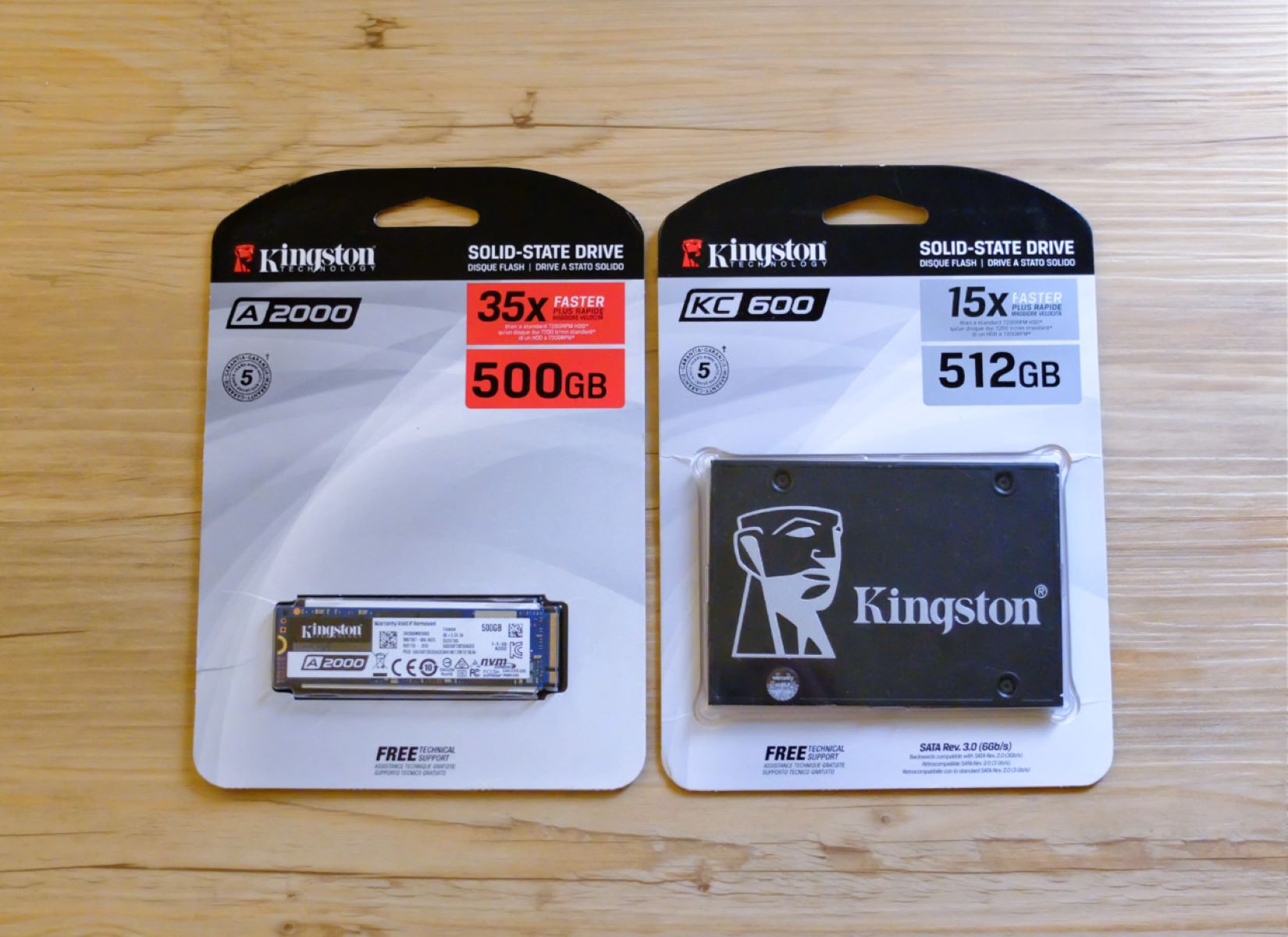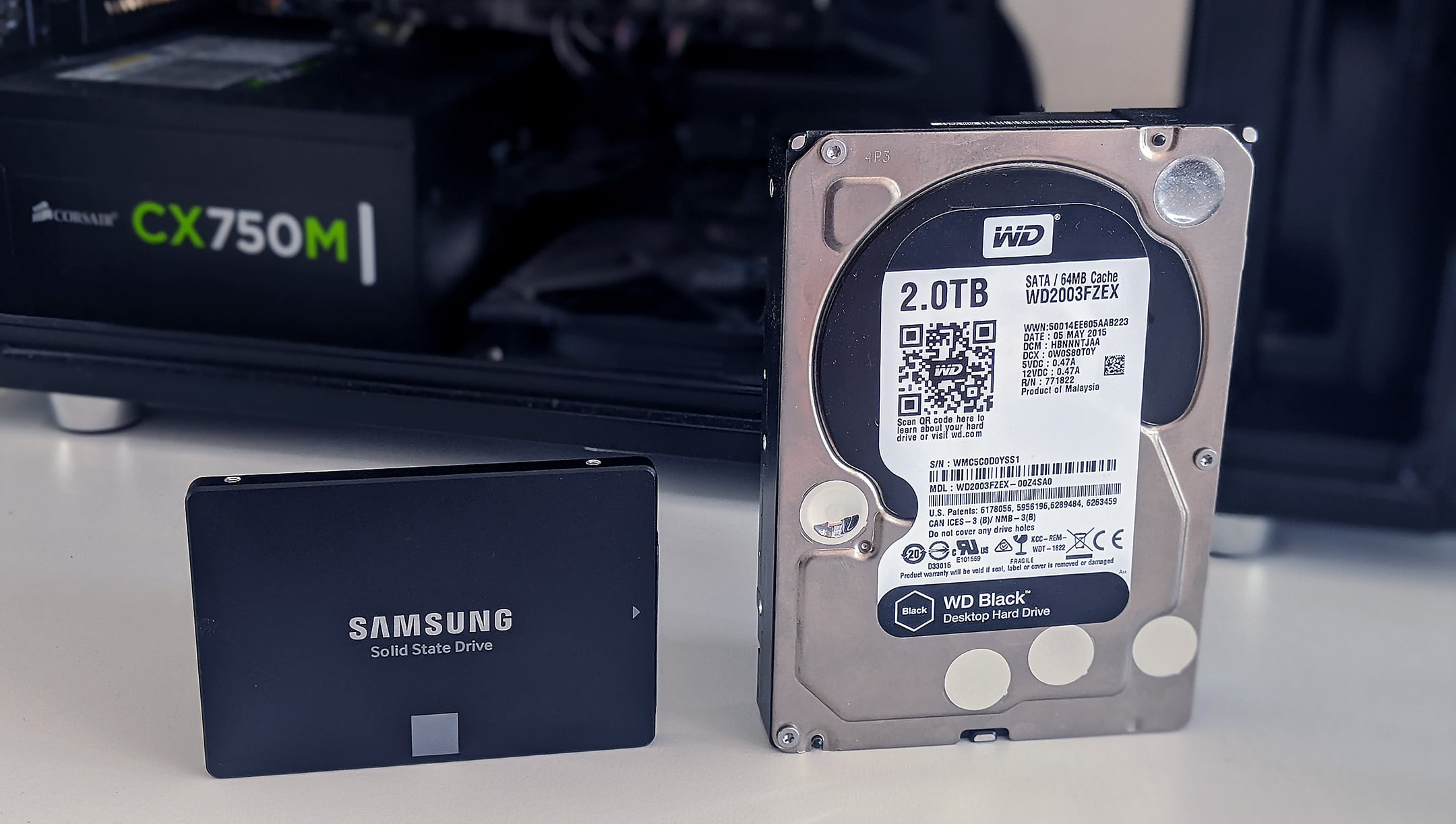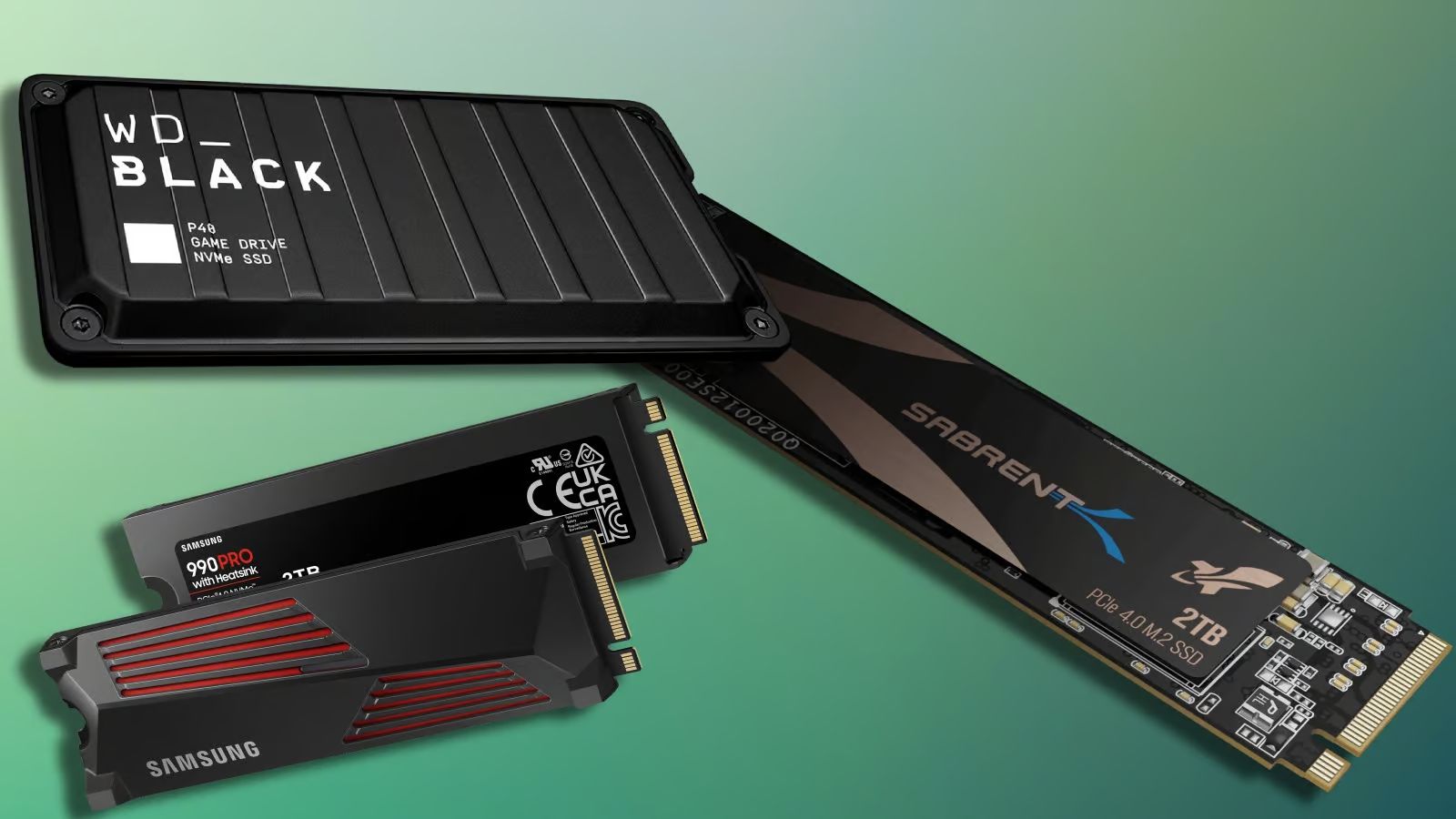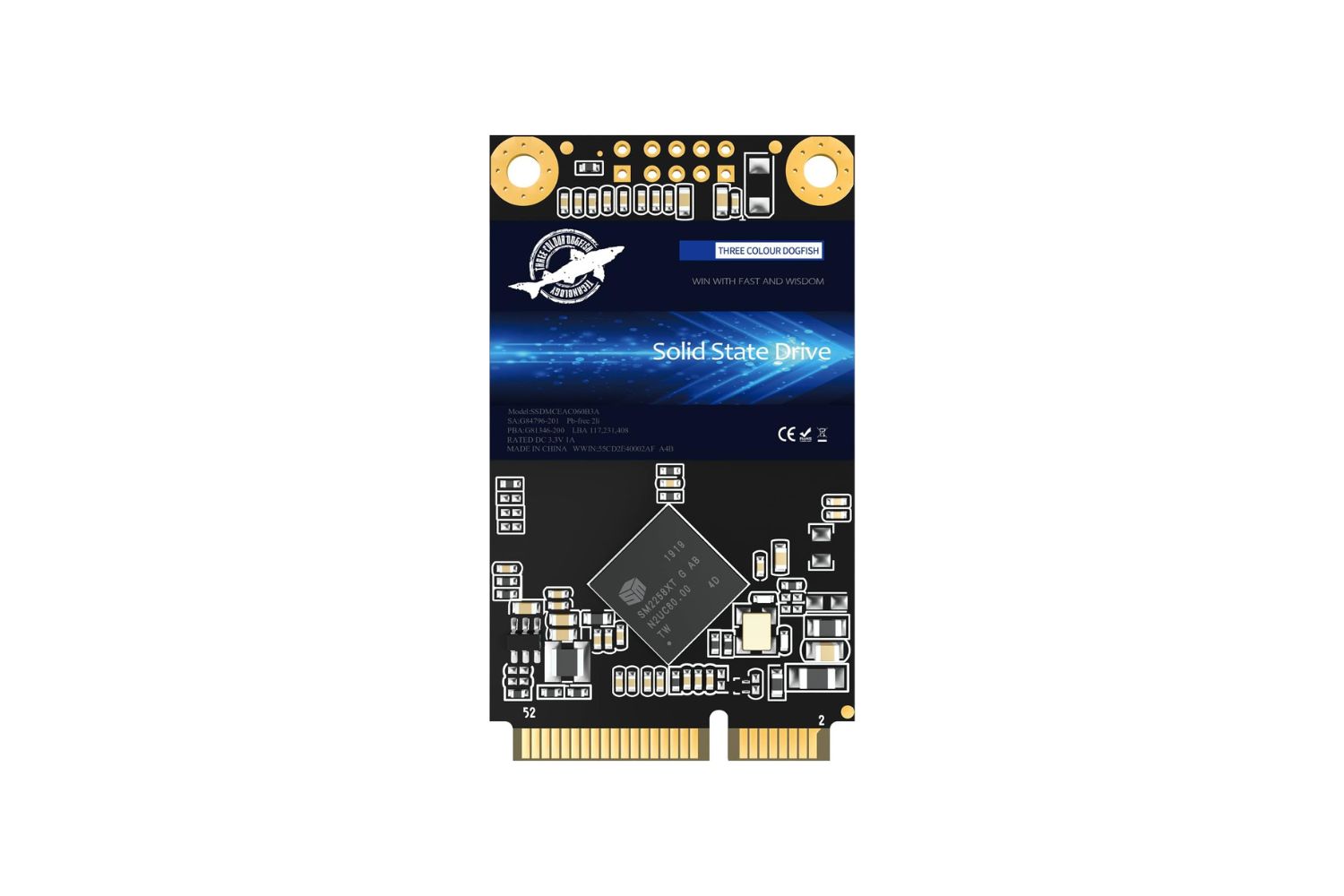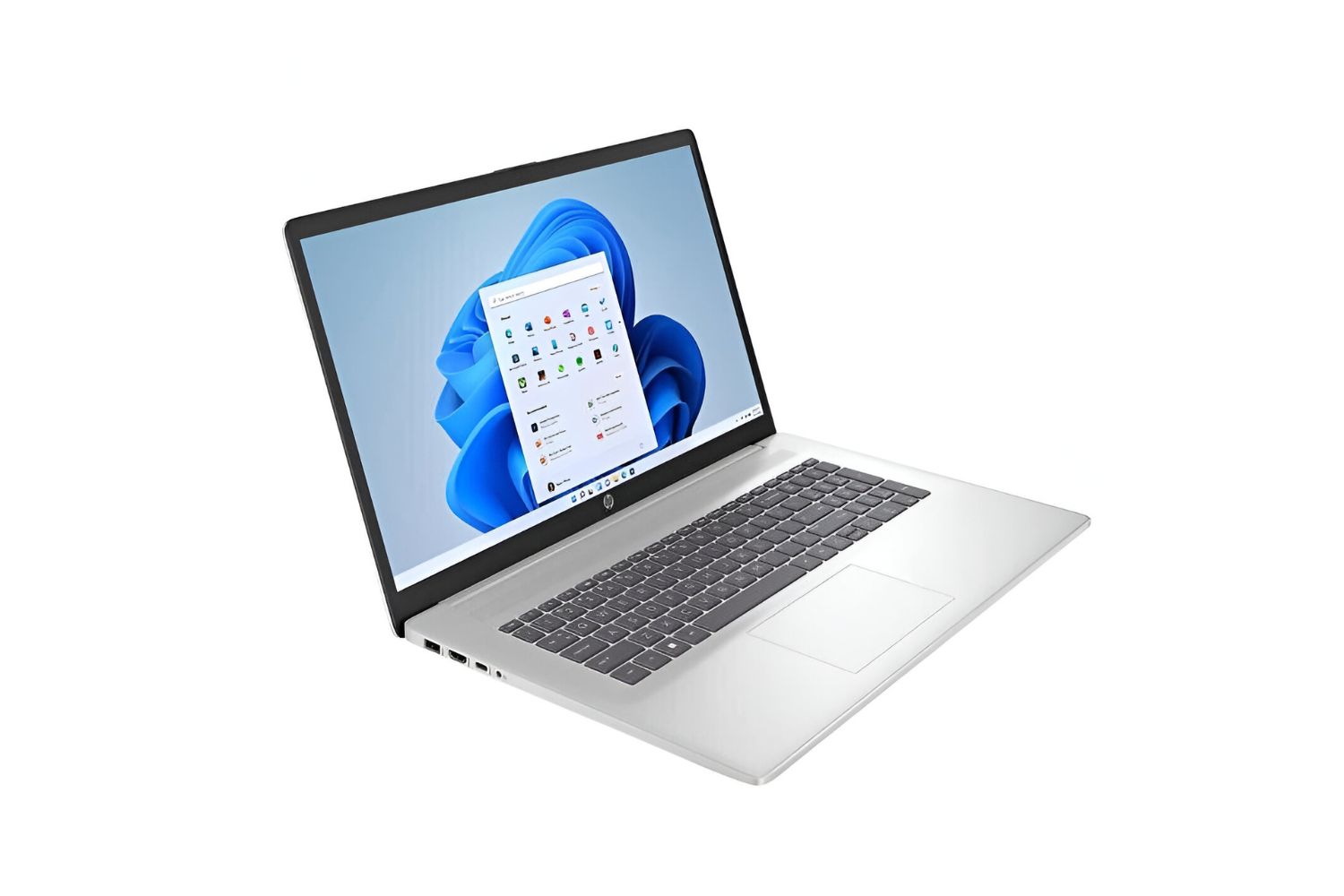Introduction
When it comes to data storage in computers and other devices, hard drives and solid-state drives (SSDs) are the two most popular options. Both serve the same purpose of storing and retrieving data, but they have distinct differences in terms of performance, capacity, and design. Understanding these differences is crucial when deciding which type of storage solution is best for your needs.
A hard drive, also known as a hard disk drive (HDD), has been the traditional choice for computer storage for many years. It uses magnetic disks to store data and a mechanical arm to read and write information. On the other hand, a solid-state drive (SSD) uses flash memory chips to store data, eliminating the need for moving parts. This results in faster performance, increased durability, and reduced power consumption.
In this article, we will delve into the differences between a 1TB hard drive and a 256GB solid-state drive. We will explore their physical characteristics, storage capacities, speed and performance, reliability and durability, power consumption, and price factors. By the end, you will have a clear understanding of the benefits and trade-offs between these two storage options, allowing you to make an informed decision when choosing the right drive for your needs.
What is a Hard Drive?
A hard drive, also known as a hard disk drive (HDD), is a traditional storage device that has been widely used in computers and other electronic devices for decades. It is composed of multiple circular magnetic disks, which are coated with a magnetic material, and a mechanical arm that reads and writes data to these disks. The arm moves across the disks to access different areas, allowing for the retrieval and storage of data.
Hard drives are known for their large storage capacity, often ranging from a few hundred gigabytes (GB) to several terabytes (TB). This makes them suitable for storing large files such as videos, photos, and documents. They are commonly used in desktop computers, laptops, external storage devices, and servers.
Due to their mechanical nature, hard drives have specific limitations. The moving parts, including the spinning disks and the mechanical arm, make them more susceptible to physical damage from vibrations or shocks. This can lead to data loss or drive failure if not handled properly or exposed to harsh conditions.
One of the key advantages of hard drives is their affordability. Compared to solid-state drives, hard drives are generally more cost-effective in terms of price per gigabyte of storage. This makes them a popular choice for budget-conscious consumers or those requiring extensive storage space.
However, hard drives do have drawbacks when it comes to speed and performance. The mechanical arm’s movement and the need for the disks to spin can result in slower read and write speeds compared to solid-state drives. This can impact system boot times, file transfer speeds, and overall responsiveness of the device.
Overall, hard drives are a reliable and economical storage option for users who prioritize cost-effective high-capacity storage over speed and performance. Understanding the characteristics and limitations of hard drives is essential for making an informed decision when comparing them to solid-state drives.
What is a Solid State Drive?
A solid-state drive (SSD) is a newer type of storage device that has gained popularity in recent years. Unlike a hard drive, an SSD does not have any moving parts. Instead, it uses flash memory chips to store and retrieve data. This design eliminates the mechanical arm and rotating disks found in hard drives, resulting in faster and more efficient performance.
SSDs offer several advantages over traditional hard drives, including faster read and write speeds. The absence of moving parts allows for near-instantaneous data access, leading to quicker system startup times and faster file transfers. This makes SSDs ideal for tasks that require high-speed data access, such as gaming, video editing, and operating system installations.
The absence of moving parts in SSDs also improves their durability and reliability. Without mechanical components that can fail or break due to physical shocks, SSDs are less prone to damage in case of accidental drops or impacts. This makes them a more robust storage solution for portable devices like laptops and external drives.
Another advantage of SSDs is their energy efficiency. Traditional hard drives require power to spin the disks and move the mechanical arm, resulting in higher power consumption. SSDs, on the other hand, consume less power as they rely on electronic circuits to read and write data. This can lead to longer battery life in portable devices and reduced energy costs in desktop computers.
SSDs come in various storage capacities, including the popular 256GB option. While SSDs generally have smaller capacities compared to hard drives, advancements in technology have increased the availability of larger storage options, making them more viable for users needing ample storage space. SSDs are commonly used in laptops, ultrabooks, tablets, and other portable devices that prioritize speed, energy efficiency, and reliability.
However, one consideration with SSDs is their higher cost per gigabyte compared to hard drives. Due to the use of flash memory technology, SSDs are generally more expensive when it comes to price per storage capacity. This can be a limiting factor for users in need of large amounts of storage on a budget.
In summary, solid-state drives offer significant advantages over hard drives, including faster performance, enhanced durability, lower power consumption, and compact form factors. Understanding the unique features of SSDs can help you make an informed decision when choosing between different storage options.
Physical Differences between Hard Drives and Solid State Drives
Hard drives and solid-state drives (SSDs) differ not only in terms of how they store and retrieve data but also in their physical design and construction.
A hard drive consists of multiple magnetic disks, also known as platters, that are coated with a magnetic material. These platters are stacked on top of each other and spin at a high speed while the drive is in use. A mechanical arm with a read/write head moves across the spinning platters to access different sectors and retrieve or store data.
On the other hand, SSDs do not have any moving parts. They are composed of interconnected memory chips, typically made of NAND flash memory. These chips store data electronically, and information can be accessed instantly without any mechanical movements.
The physical differences in design result in variations in size and weight between hard drives and SSDs. Hard drives tend to be bulkier and heavier due to their mechanical components and the need for larger casings. SSDs, being devoid of moving parts, are much smaller and lighter, making them ideal for slim and lightweight devices like ultrabooks and tablets.
Additionally, hard drives require more power to operate due to the spinning platters and moving arm. This increases the heat generated by the drive, necessitating the use of cooling systems such as fans. SSDs, in contrast, generate less heat and consume significantly less power, contributing to better energy efficiency and reducing the need for cooling mechanisms.
The physical differences between hard drives and SSDs also affect their shock resistance and durability. Hard drives are more susceptible to damage from physical shocks and vibrations due to their spinning platters and delicate mechanical arm. In contrast, SSDs are more resistant to physical impacts as they do not rely on moving parts, making them a more reliable option, especially for portable devices.
When it comes to noise levels, hard drives can produce audible sounds due to the moving components. The spinning platters and the mechanical arm result in slight vibrations and noise while the drive is in operation. In comparison, SSDs operate silently as they do not have any moving parts, providing a quieter computing experience.
In summary, the physical differences between hard drives and solid-state drives extend beyond their storage mechanisms. Hard drives have spinning platters and a mechanical arm, making them larger, heavier, and more power-hungry. SSDs, on the other hand, are smaller, lighter, and generate less heat while offering improved durability and shock resistance. Understanding these physical distinctions will help you choose the appropriate storage solution that suits your needs.
Capacity Differences between Hard Drives and Solid State Drives
When it comes to storage capacity, both hard drives and solid-state drives (SSDs) offer a range of options to suit different needs. However, there are distinct differences in their capacity capabilities.
Hard drives are known for their large storage capacities, often starting at several hundred gigabytes (GB) and reaching multiple terabytes (TB). This makes them an excellent choice for users who require ample space to store large files such as videos, photos, and applications. With a hard drive, you can easily find options with capacities of 1TB, 2TB, or even higher, providing you with ample room for your data.
On the other hand, while SSDs also come in various capacities, they usually offer smaller storage options compared to hard drives. This is primarily due to the higher cost of flash memory used within SSDs. Common SSD capacities range from 128GB to 2TB, with some models offering even higher capacities. However, it’s important to note that as SSD technology continues to evolve, larger capacity options are becoming more readily available.
When considering the capacity differences between hard drives and SSDs, it’s essential to assess your storage needs. If you require vast amounts of storage space for multimedia files, extensive software libraries, or data-heavy applications, a hard drive may be the preferable option due to their larger capacities and lower cost per gigabyte.
However, if your storage requirements are more focused on speed, performance, and portability, an SSD may be the better choice. Though SSDs have smaller capacities, they excel in terms of read and write speeds, allowing for faster data access and improved system responsiveness. This makes them ideal for tasks such as gaming, video editing, and running demanding software.
Additionally, if you primarily use cloud storage services, stream media content, or have access to networked storage solutions, the capacity of your local hard drive or SSD might be less of a concern. In these scenarios, a smaller capacity SSD can still offer sufficient storage space for your immediate needs, with the ability to offload less frequently accessed files to cloud storage or networked drives.
Ultimately, when choosing between a hard drive and an SSD based on capacity, it’s crucial to evaluate your specific requirements. Consider factors such as the types of files you need to store, the speed of access and performance you desire, and your budgetary constraints to make an informed decision on the most suitable storage solution for your needs.
Speed and Performance Differences between Hard Drives and Solid State Drives
When it comes to speed and performance, solid-state drives (SSDs) have a distinct advantage over hard drives due to their differing technologies and construction.
Hard drives rely on mechanical components, including spinning platters and a mechanical arm, to read and write data. This mechanical process inherently introduces latency and slower read/write speeds compared to SSDs. The rotational speed of the platters, measured in revolutions per minute (RPM), affects the performance of a hard drive. However, even the fastest hard drives typically have slower data transfer rates compared to SSDs.
On the other hand, SSDs use flash memory chips to store and retrieve data electronically. This technology allows for near-instantaneous access, with read/write speeds significantly exceeding those of hard drives. SSDs are capable of delivering faster boot times, quicker file transfers, and improved overall system responsiveness due to their ability to access data without the mechanical limitations of hard drives.
The difference in speed and performance is particularly noticeable in tasks that involve large data transfers or random access to multiple files. For instance, when launching applications, an SSD can significantly reduce the loading time compared to a hard drive. Similarly, copying or moving large files between different locations will be much faster with an SSD.
SSDs also excel in multitasking scenarios. With their superior read/write speeds, they can handle concurrent operations more efficiently, improving overall system performance. This is especially beneficial for users who frequently multitask or work with resource-intensive applications.
In addition to faster data access, SSDs also offer consistent performance over time. Hard drives can experience performance degradation as they become fragmented or experience wear and tear on mechanical components such as the arm or the platters. SSDs, on the other hand, do not suffer from these issues, maintaining their performance levels throughout their lifespan.
It’s important to note that while SSDs offer impressive speed and performance, the specific performance gains may vary depending on factors such as the interface used (e.g., SATA, NVMe), the quality and type of flash memory, and the controller technology employed by the manufacturer.
Overall, SSDs provide a significant boost in speed and performance compared to hard drives. The faster read/write speeds, near-instantaneous data access, and superior multitasking capabilities make SSDs the preferred choice for users who demand high-performance storage solutions.
Reliability and Durability Differences between Hard Drives and Solid State Drives
When it comes to reliability and durability, solid-state drives (SSDs) have distinct advantages over hard drives due to their differing designs and absence of mechanical components.
Hard drives, with their spinning platters and mechanical arms, are more susceptible to physical damage from external factors such as shocks, drops, and vibrations. The delicate nature of their mechanical components makes hard drives more prone to failure or data loss, especially in portable devices that are frequently moved or subjected to rough handling.
On the other hand, SSDs do not have any moving parts, which significantly improves their durability and resistance to physical impact. The lack of mechanical components means that SSDs are better equipped to handle shocks and vibrations, reducing the risk of data loss or drive failure. This makes SSDs an ideal choice for users who need a reliable and durable storage solution, especially for portable devices like laptops.
Furthermore, the absence of moving parts in SSDs also contributes to their longevity. Hard drives are susceptible to wear and tear over time, with the mechanical arm and spinning platters experiencing gradual degradation. This can result in decreased performance and potential failure. In contrast, SSDs have a longer lifespan as they are not subject to the same mechanical wear and tear. Instead, the lifespan of an SSD is determined by the number of write and erase cycles endured by the memory cells, which modern SSDs can handle effectively with wear-leveling algorithms.
Another aspect to consider is data recovery. In the event of a failure or data loss, recovering data from a hard drive can be challenging and costly. The mechanical nature of hard drives often requires professional assistance and specialized equipment to retrieve data. SSDs, on the other hand, typically have a higher chance of successful data recovery due to their electronic nature. However, it is still important to regularly back up data regardless of the type of storage device used.
Overall, the reliability and durability of SSDs make them a compelling choice for users who prioritize data security and device longevity. The lack of mechanical components in SSDs reduces the risk of damage from physical shocks, increases their resistance to wear and tear, and improves their overall reliability.
While hard drives can still offer reliable storage solutions when handled carefully, SSDs present a superior option when it comes to durability and long-term data protection. However, it’s advisable to consider factors such as the quality and reputation of the manufacturer when choosing an SSD to ensure optimal reliability and durability.
Power Consumption Differences between Hard Drives and Solid State Drives
When it comes to power consumption, solid-state drives (SSDs) have a clear advantage over hard drives due to their different construction and lack of mechanical components.
Hard drives require power to spin the platters and move the mechanical arm, which results in higher power consumption. The spinning motion and mechanical operations contribute to increased energy usage, leading to higher power requirements and higher heat generation. This not only affects the power efficiency of the system but also necessitates the use of cooling mechanisms like fans to dissipate the excess heat.
On the other hand, SSDs operate on electronic circuits and do not rely on any moving parts. This significantly reduces their power consumption compared to hard drives. Since SSDs do not have to spin platters or move mechanical arms, they consume considerably less power during operation. This results in better energy efficiency, reduced heat generation, and longer battery life in portable devices.
The low power consumption of SSDs makes them an ideal choice for laptops, ultrabooks, and other battery-powered devices. With an SSD installed, laptops can benefit from extended battery life, allowing users to work or engage in activities for longer periods without the need to recharge frequently.
Furthermore, SSDs are advantageous in terms of power efficiency even when compared to hard drives in idle or standby states. While hard drives still require power to keep the platters spinning and the mechanical arm ready to access data, SSDs consume significantly less power during periods of inactivity. This contributes to overall energy savings and reduces the environmental impact associated with power consumption.
It’s important to note that power consumption can vary based on the specific models and specifications of both hard drives and SSDs. Factors such as capacity, performance, and manufacturer technology can influence power efficiency. Additionally, newer SSD technologies utilizing NVMe (Non-Volatile Memory Express) interfaces tend to have even lower power consumption compared to traditional SSDs using SATA interfaces.
In summary, SSDs have a clear advantage over hard drives when it comes to power consumption. They consume significantly less power during operation and in idle or standby states, resulting in improved energy efficiency and longer battery life in portable devices. Consideration of power consumption is crucial, especially for users who prioritize battery life or strive for energy-efficient computing solutions.
Price Differences between Hard Drives and Solid State Drives
When it comes to price, hard drives and solid-state drives (SSDs) have distinct differences due to their differing technologies and production costs.
Hard drives, being the more traditional and long-standing storage option, generally offer more affordable pricing compared to SSDs. This is primarily due to the lower cost of manufacturing hard drives using magnetic storage technology. Users can find hard drives with large storage capacities at relatively low prices, making them a cost-effective choice for those in need of substantial storage space without breaking the bank.
On the other hand, SSDs are known to be more expensive than hard drives in terms of price per storage capacity. The flash memory chips used in SSDs are more expensive to produce compared to the magnetic platters and mechanical components in hard drives. As a result, SSDs tend to have a higher price per gigabyte compared to hard drives.
However, it’s worth noting that the price difference between hard drives and SSDs has been narrowing over the years as SSD technology becomes more prevalent and affordable. The advancement in manufacturing processes and increased competition in the market have contributed to the declining prices of SSDs.
Additionally, the price difference between hard drives and SSDs can vary based on the specific models and capacities. SSDs with higher capacities tend to have a higher price premium compared to smaller capacity SSDs or hard drives.
When considering the price differences, it’s important to assess your specific needs and budget. If budget is a significant concern and you require a large storage capacity for your data, a hard drive may be the more economical choice. Hard drives provide a cost-effective solution for users who prioritize affordability and extensive storage space.
On the other hand, if speed, performance, durability, and power efficiency are important considerations for your computing needs, SSDs offer significant advantages despite the higher price per gigabyte. SSDs are an investment in improved system performance and overall user experience.
Ultimately, the decision between a hard drive and an SSD based on price depends on your budget constraints, storage requirements, and priorities. Assessing your specific needs and weighing the benefits of each storage option against their pricing will help you make an informed decision that aligns with your budget and expectations.
Conclusion
In conclusion, when comparing a 1TB hard drive and a 256GB solid-state drive (SSD), there are several important differences to consider. Hard drives are known for their large storage capacities, making them an excellent choice for users who require ample space to store large files. They are also more budget-friendly, making them a popular option for those seeking cost-effective storage solutions.
On the other hand, SSDs offer superior speed and performance. With their ability to provide near-instantaneous data access, SSDs are ideal for tasks that require high-speed data transfers and improved system responsiveness. They are also more reliable and durable due to the absence of mechanical parts, making them a preferable choice for users who prioritize data security and device longevity.
Furthermore, SSDs have the advantage of lower power consumption, resulting in better energy efficiency and longer battery life in portable devices. Although SSDs typically have smaller storage capacities and higher price points per gigabyte compared to hard drives, advancements in technology have made SSDs more affordable and offered larger capacity options over time.
Ultimately, the decision between a hard drive and an SSD depends on your specific needs and priorities. If you require a large storage capacity at an affordable price and are willing to sacrifice speed and performance, a hard drive may be suitable for you. However, if you prioritize speed, reliability, and power efficiency, an SSD would be an excellent choice despite the higher cost.
It’s important to assess your storage requirements, budget constraints, and computing needs to determine which option best suits you. Whether you choose a hard drive or an SSD, both storage solutions have their unique advantages and considerations to weigh. By understanding the differences between them, you can make an informed decision that meets your specific needs and enhances your overall computing experience.











